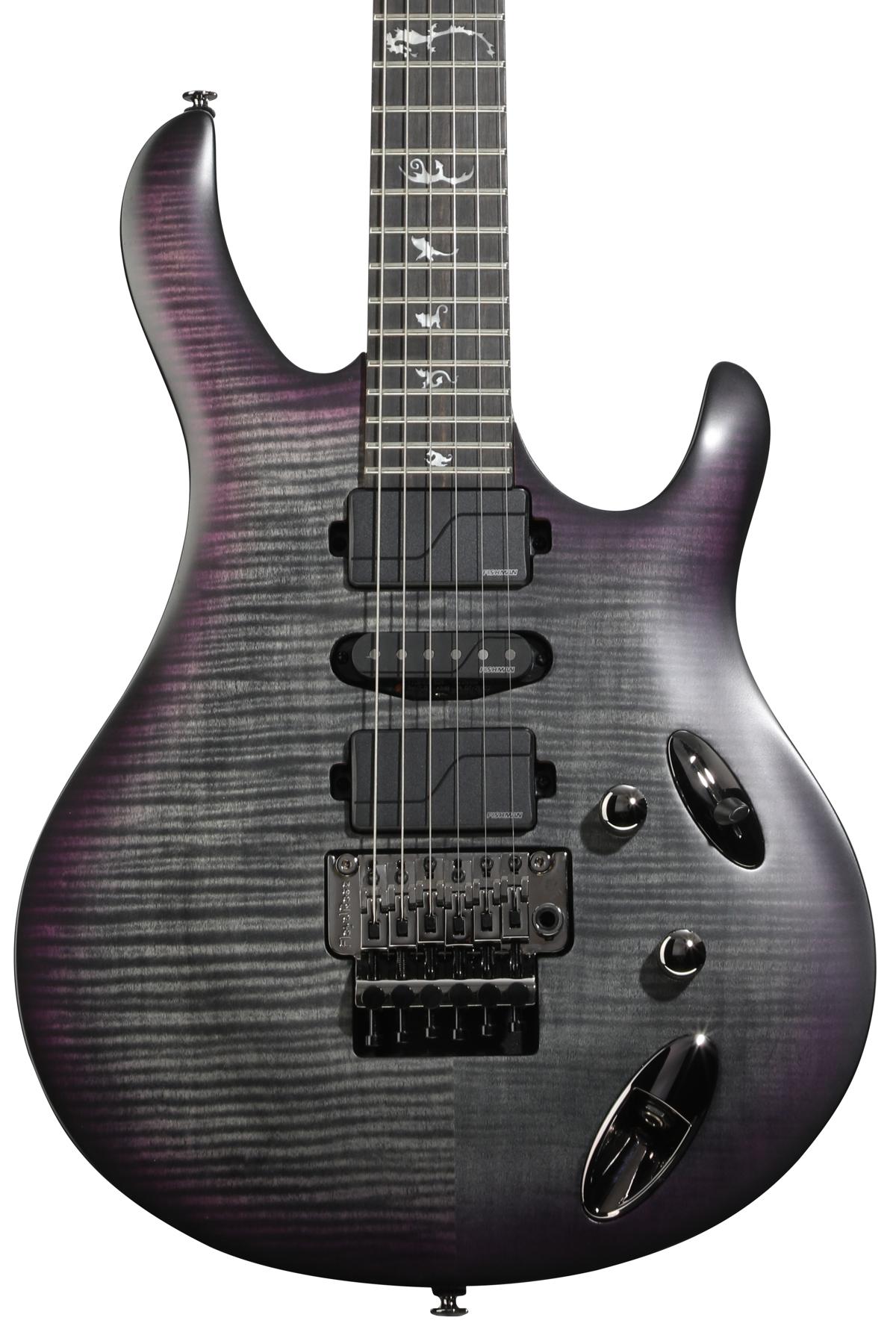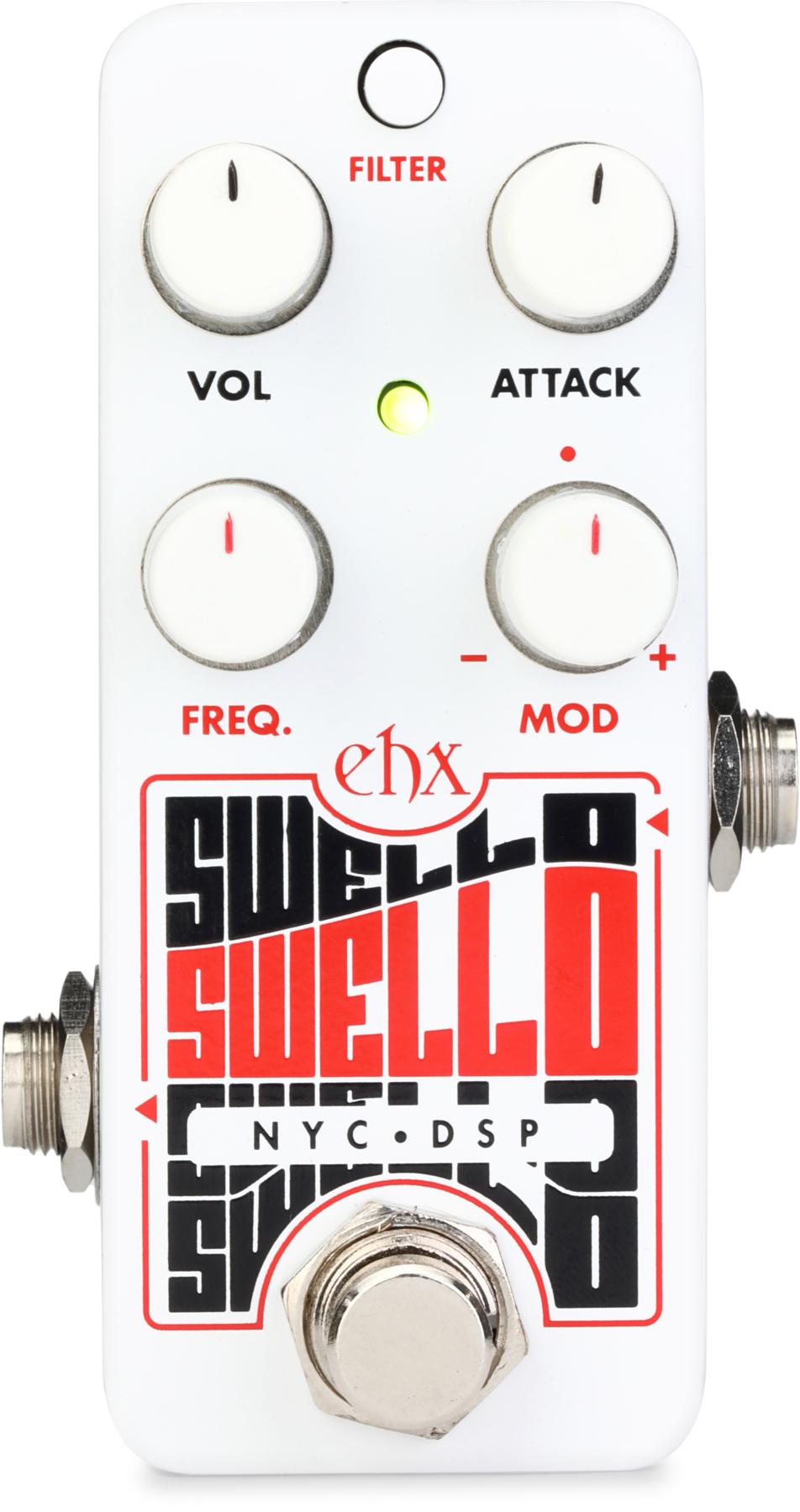 | |
| Download Example 1 Acoustic - mic'd | |
| Download Example 2 Amplified - AAD Super Cub | |
Appointments and Features We got a base model for review, with pickup system installed. The Tonare Grand is a comfortable 16" at the widest point. This top is European spruce, and back and sides are cocobolo with exquisite cocobolo veneer bindings and purflings, finished with the proprietary PRS shatter-hard all Nitro finish. The 1-3/4" fingerboard, inlayed with the familiar PRS bird figures, is cocobolo as well, with identical binding all the way around, which flows onto the cocobolo-faced headstock to form a complete outline. The rosette is charming and simple: three alternating rings of cocobolo and abalone. Side dots are elegant tiny circles that look like copper or brass, and this is my only complaint: in anything but direct light you can barely see the side dots (some of us with agingeye- syndrome had to put on the special glasses to see them at all). The neck is very much like their electrics—chunky, comfortable, satiny, and ergonomic enough to play for hours. Barre chords are almost effortless, easier than almost any acoustic I’ve ever played. The lovely Keith Robson hand-machined tuners look like they could be gears in an artillery launcher. They’re very sensitive; a little tweak goes a long way.
The pickup system is PRS designed, with a Volume knob mounted inside the soundhole, carefully inset into the ring-brace. The onboard preamp requires two 9V batteries, which may seem like a lot, but in return for 18V you get massive headroom, which is highly useful in live situations.You can play hard and loud without fear of overdriving the pre or distorting. One caution: these pickups seem really susceptible to picking up 60-cycle hum from dirty power or florescent lighting, so use a power conditioner or choose your outlet wisely.
But back to the very first impression: undiluted cocobolo smells intoxicating. Dark yet delicate, it wafts up at you the second you open the case. (These guitars should come with a warning label: Deliberately concentrating and inhaling the contents may exacerbate existing GAS to critical levels.)
But Does It Live Up to the Hype?
This guitar has a huge sound; voluptuous and chimey, yet fantastically warm and phenomenally detailed. It’s a dark and glassy tone that is hypnotically appealing. I do a lot of what I call “interior melody” playing, which is a DADGAD convention that came from having so many droning notes available that you can play lead and strum rhythm at the same time. With some guitars, you have a little trouble picking out where the melody is; they’re too bassy or muddy sounding. The Tonare Grand somehow makes those interior notes sound louder—they really “pop” inside that wash of tone.
I played in every tuning I could think of and found it to be remarkably responsive. It stayed quite resilient with the low E-string tuned down to a C (in CGDGBD and CBDGAE tunings), while a lot of guitars start to sound kinda flabby tuned that low. Flatpicked or fingerstyle, there wasn’t anything I could do to overdrive it or cause it to sound muddy, distorted, brash or reedy. It simply got louder the harder I played. If flatpicking was effortless, fingerstyle was incredible. Sustain is off the charts. Every note rings—even when you fret over a ringing string, you can still hear the original note ringing in the body. You can get a cascade of notes flowing like a waterfall; play some harmonics and then play fingerstyle melody-and-bass over that, and you hear the harmonic ringing well into the next line you play. This guitar performs stunningly with hammer-ons, pull-offs and tapping. Bends and slides take on entirely new properties with the heightened sustain.
Plugged In
The proprietary PRS pickup system sounds gorgeous—rich and lush with every detail audible. There is no mid-range hump that makes this guitar sound “electric-y” plugged in. It sounds remarkably like the guitar itself, only louder. When you turn it up really loud, Oh Mamma, it’s almost unmentionably good. Honestly, there’s not a lot to add to my comments about tone, because it’s so very WYPIIWYG (What You Plug In Is What You Get). Whatever PRS has done to make these guitars plug in this good, they need to keep doing it.
The Final Mojo
The Tonare Grand is absolutely everything you’d want in a guitar in this price range, even significantly higher. It makes everything easier. It makes you a better player because it lets you play better. Truth be told, I got quite melancholy when I had to send it back to PRS. If you are looking at guitars in this price range, look at these.
Buy if...
you’re ready to fall desperately in love with a guitar you’ll use for damn near everything.
Skip if...
you’re not a strong, confident player, because you won’t ever demand the best this guitar can be.
Rating...
Street $5330 (base); $5855 (as reviewed) - PRS Guitars - prsguitars.com |











![Rig Rundown: Russian Circles’ Mike Sullivan [2025]](https://www.premierguitar.com/media-library/youtube.jpg?id=62303631&width=1245&height=700&quality=70&coordinates=0%2C0%2C0%2C0)









